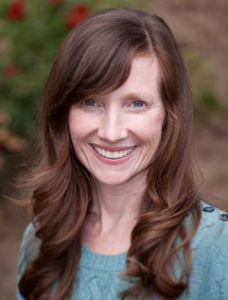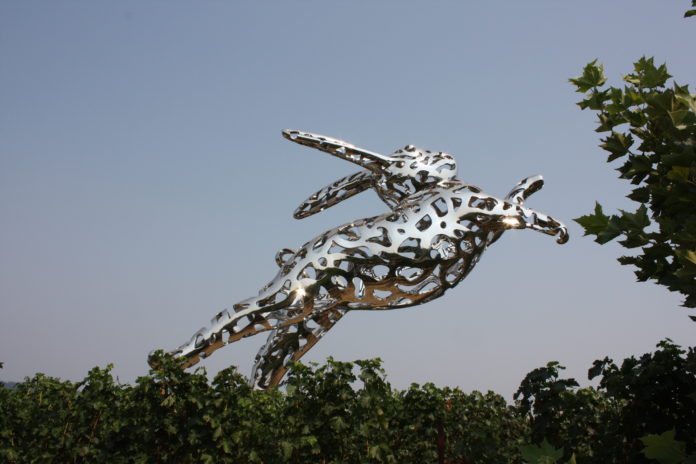Hi All:
This is the first “Ask an Enviro” feature and we have hopes it will grow into something profitable for all of us who drink water and eat food – that’s the common link. I’ve heard my entire career farmers are like herding cats and ag does a poor job of telling its story. So, there will also be a feature “Ask a Farmer”. The plan is to run each of these two features once a month. Do you folks working in agriculture have some questions you’d like to ask environmentalists? Here’s your chance. Do you folks who don’t work in agriculture have questions for farmers? Here’s your chance. Send your questions to me don@waterwrights.net and we’ll start this dialog.
I’m very pleased to introduce you to Ann Hayden of Environmental Defense Fund. I’ve had the pleasure of getting to know Ann over the past couple of years and I can tell you she’s not a flame thrower. Likewise EDF recognizes humans are a part of the environment as well. You may contact Ann at ahayden@edf.org
Ask an Enviro
WaterWrights.net is launching this new series, “Ask an Enviro,” to help break down silos, open communication and build a stronger bridge between environmentalists and farmers in our community. I’m Ann Hayden, senior director, western water and resilient landscapes, at Environmental Defense Fund (EDF). EDF is an international nonprofit that has spent decades building inclusive environmental coalitions alongside farmers, ranchers, corporate leaders and other unexpected allies — teaming up on projects where we can make the greatest impact. EDF has been working on environmental issues in California since the 1980s and was founded in New York in 1967. I’ve been a member of EDF’s western water team for over 17 years and met Don Wright at a landowner workshop held by the Rosedale-Rio Bravo Water Storage District.
- Why is EDF working on water issues in California? How would you describe EDF’s approach?
EDF’s been working in California for over the past 40 years to ensure that people and our environment have reliable water supply now and into the future. The reason is simple: Water is central to all of us. It hydrates us, helps feed us, powers our economies, sustains wildlife, and provides recreation on rivers and lakes. We recognize the critical role that the agriculture sector plays — farmers are literally feeding us — and we have long believed that agriculture has an important role in being part of the water solution, and that rural communities need to have a say in how decisions are made. That’s why we work with farmers, marginalized communities, and other local stakeholders to understand their needs and challenges. We then collaborate with them on designing and implementing sustainable water and land use solutions that balance all interests and protect the most vulnerable.
In some cases these solutions take the form of water accounting and trading programs, like the one we co-developed with the Rosedale-Rio Bravo Water Storage District and a group of its ag customers in Kern County. In other cases, we work with rural communities to increase local capacity to effectively engage in decision-making and advocate for safe, reliable drinking water, as we did in partnership with the Rural Community Assistance Corporation and the Rural Water Boards Leadership Institute.
2. How does EDF envision balancing the needs of the farming community with its environmental goals, especially as SGMA requires reducing groundwater pumping?
We believe that meeting the needs of the farming community and the environment are not mutually exclusive, that it is possible to help agriculture adapt to an uncertain water future while ensuring that environmental conditions improve. Where feasible, EDF supports developing additional water supplies for the Valley, but even with full development of affordable and environmentally responsible supplies, most evidence suggests that land conversion will be required. Balanced solutions will require a mix of different actions. We know that farmers have some tough decisions to make with the limited water supply they have, but without SGMA, the decisions would become even tougher as water scarcity reached a crisis during the next drought or the drought after that. With SGMA, we have the chance to think about the future and plan deliberately for the reductions in water use that have to happen at some point.

If farmers focus on irrigating their most productive lands, then it may be possible to repurpose less productive lands and create other values that farmers and communities can benefit from. And, we think California should bring some public dollars to bear to help in the transition. Examples of new uses could be low-impact solar, wildlife-friendly groundwater recharge, and restored floodplains to reduce flood risks and restore habitat. In the case of habitat, farmers could gain a new source of revenue by selling mitigation credits to entities, such as Caltrans or a developer, that need to mitigate environmental impacts.
3. What projects are you working on that you are most excited about?
I think the groundwater accounting work with Rosedale Rio Bravo will pay dividends for California’s water future. When farmers have easy to access data about their water use, they can make more informed water management decisions.
I’m also very excited about a new project in the Kaweah Sub Basin in Tulare County because it brings together local stakeholders to develop options about how to implement the Sustainable Groundwater Management Act in ways that meet the region’s goals. This project will be the first in the Central Valley to use the state’s Regional Conservation Investment Strategies (RCIS) program to help communities respond to the water and land use changes that are expected under SGMA. Groundwater Sustainability Agencies in the region recognize that some amount of acreage will likely be taken out of production as a way to balance groundwater demand with available supply. The RCIS allows stakeholders to identify areas that can be consolidated and converted — on a voluntary basis — to other uses like habitat, groundwater recharge, dry land grazing and low-impact solar, which farmers can be compensated for creating. Importantly, the process will proactively engage diverse members of the community to have a say on what they want their community’s future to look like.
We were really pleased to see the East Kaweah Groundwater Sustainability Agency awarded $515,000 in February from the state’s Wildlife Conservation Board to develop an RCIS plan. Not surprisingly, the kickoff has been delayed by the coronavirus pandemic but it’s now scheduled to happen, virtually, in July. My hope is that this process in the Kaweah Sub Basin can become a model for other regions as they grapple with similarly challenging issues.
4. On a more personal note, how did you end up working on water issues?
I grew up in a rural part of Yolo County surrounded by farms and small agricultural operations. While my family wasn’t directly involved in farming, my brothers and I got our feet wet raising pigs and sheep and showing them at the annual 4-H festival in nearby Woodland. We were friends with our farming neighbors and shared the same underground water supply as them, so anytime there was a disruption in the operation of our shared well, residents and farmers had to work together to quickly find a solution.
Over the years, the community also came together to figure out how to improve the levee system when roads, properties and farms flooded during wet years. There were also hot, dry summers that seemed to repeat year after year, and I have stark memories of folks coming together to restore nearby Putah Creek, which would completely dry up and strand salmon. So I came to realize over time just how much water connects us all and how collective action can make a huge difference. This appreciation led me to focus my education on better understanding how to manage these systems in ways that can work for people and wildlife. Shortly after finishing graduate school, I landed my dream job at EDF, where I was quickly working on projects to help improve water supply reliability.






























